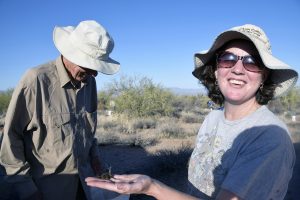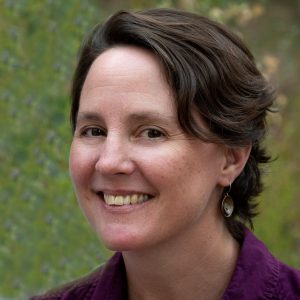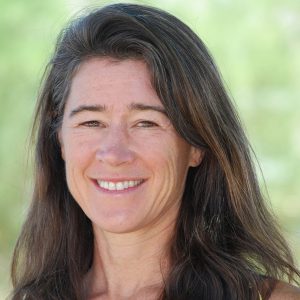Pilot Project, Year 5
Testing the utility of biocrust restoration to stabilize soils and reduce Coccidioides abundance
Valley Fever is a prevalent cause of community-acquired pneumonia in the southwestern United States. Infection is caused by inhalation of airborne Coccidioides spp. fungal conidia. For most people, the disease is mild or asymptomatic, but in others, it can cause severe respiratory illness and even death. Native American and Hispanic people are more likely to have severe manifestations or die from the disease than Caucasians.
 Although the cause of this disparity is unknown, it is likely a result of several factors, including work in agriculture, residence in areas experiencing land degradation and dust emissions, and inequity in healthcare.
Although the cause of this disparity is unknown, it is likely a result of several factors, including work in agriculture, residence in areas experiencing land degradation and dust emissions, and inequity in healthcare.
Soil becomes airborne in areas where the land surface has been disturbed, commonly as a result of agriculture, livestock grazing, recreation or land development. In the Southwest, a community of microorganisms called biocrusts are critical to maintaining soil health and integrity, but these organisms are also lost with soil disturbance. Biocrusts bind the soil surface, protecting it from wind and water erosion, thus reducing soil disturbance and dust.
Study aims
- Test methods of restoring biocrusts
- Determine which methods best mitigate dust from soil and reduce Coccidioides
We propose to test the potential of biocrust restoration to reduce exposure to Coccidioides. Specifically, we will test several methods of restoring biocrusts from field-collected or field-collected and cultivated biocrusts in a Valley Fever hotspot near Scottsdale, Arizona, to determine which methods best mitigate dust from soil and reduce the abundance of Coccidioides either directly or through competition with the soil microbial community. This translational research will demonstrate the potential of a novel environmental intervention to reduce the incidence of Valley Fever.
Funding: The study is funded by NIMHD/NIH U54MD012388
About the investigators
Anita Antoninka, PhD
Helen Rowe, PhD
Bridget Barker, PhD
Conferences Accordion Closed
Ramsey, M.L., B.M. Barker, H. Rowe and A. Antoninka. The relationship between Coccidioides posadasii and biological soil crusts in Arizona desert ecosystems. September 2022. Biennial Conference on Science and Management on the Colorado Plateau.
Cooke, B., Ramsey, M., Steinken-Kollath, D., Antoninka, A., Barker, B. 2022. Valley fever spreads beyond its endemic regions. ESA, Montreal and ASM, Tucson.
Media Accordion Closed
Fairness First blog: Healthy soils and health equity with Anita Antoninka, Fairness First blog, 2022.
The desert’s skin is disappearing – tiny lab grown plants could save it, National Geographic, 2022.
Scientists work to unravel fungus ecology as Valley fever expands throughout West, Arizona Center for Investigative Reporting, September 2021.



